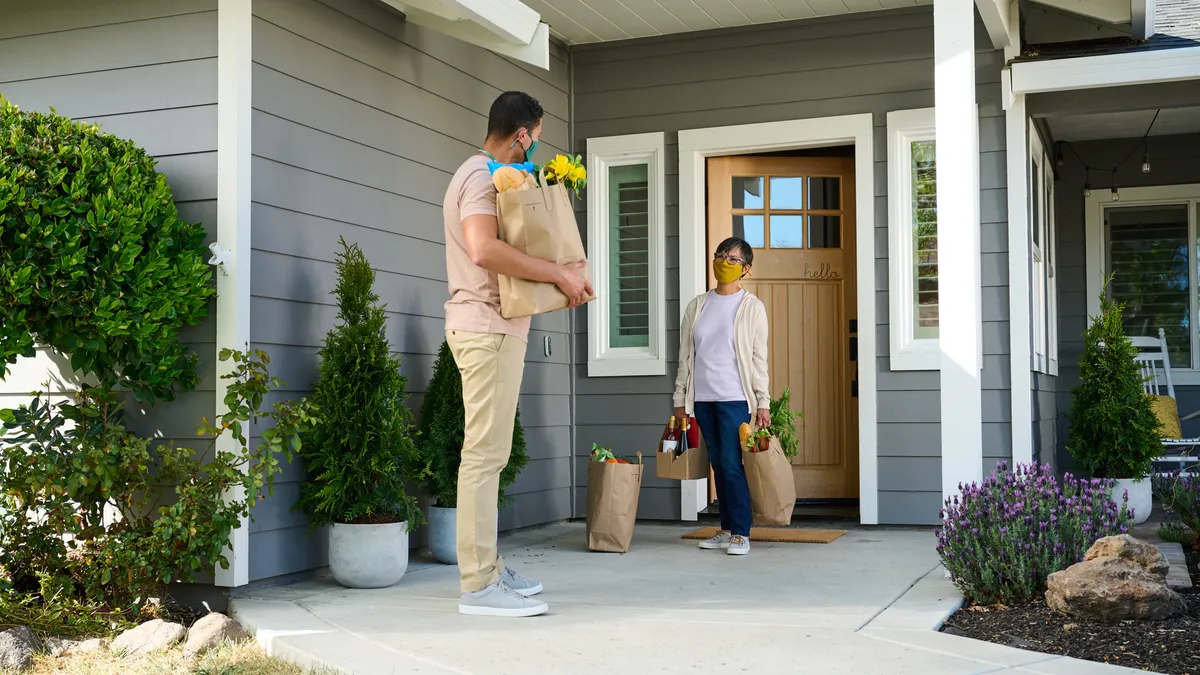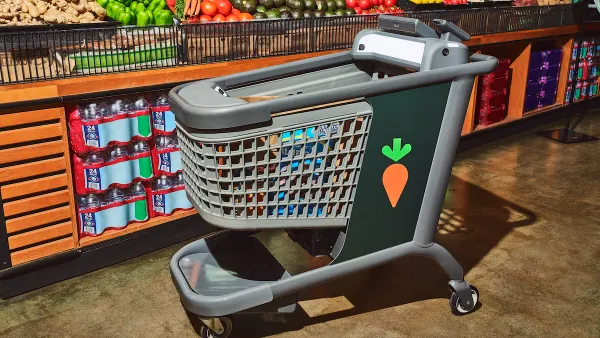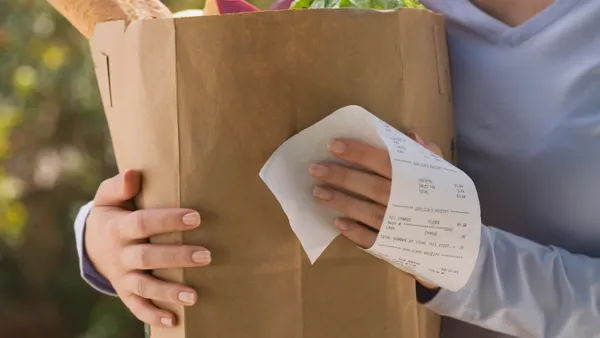Dive Brief:
- Online grocery sales in the United States were off about 1% in August compared with the same period a year ago, to $8.5 billion, but that level is still more than four times where it was in mid-2019, according to data released Tuesday by Brick Meets Click and Mercatus.
- Delivery orders accounted for just under 41% of grocery e-commerce sales last month, up from about 34% during the same period in 2021, as shoppers continued to show a growing preference for that fulfillment method.
- Shoppers were significantly more likely to direct repeat digital orders in August to mass merchandisers than to traditional food retailers, continuing a months-long trend, the two companies noted.
Dive Insight:
The latest findings from Brick Meets Click and Mercatus make clear that shoppers remain substantially more engaged with grocery e-commerce than they were before the pandemic. But the figures also underscore the enduring changes that have taken place in the online grocery space in recent years.
While online grocery receipts dipped in August, they remained well ahead of the $8.2 billion in digital sales the industry brought in during August 2020, according to the data. That’s a sign that many consumers who tried buying groceries online when the health crisis hit have baked digital ordering into their food-shopping routines.
“The COVID pandemic motivated trial of Delivery and Pickup services at a scale that no one could have predicted,” David Bishop, partner at Brick Meets Click, said in a statement. “And, as the pandemic evolves, it’s increasingly clear that many households find online grocery shopping an acceptable option to complement their new in-store shopping behaviors.”
More than 68 million households placed at least one online grocery order in August, according to the research, which takes into account data collected from 1,755 adults between Aug. 29-30. That figure is up 23% compared with 2020 and more than double the level seen three years ago.
Delivery services provided by retailers and third-party e-commerce emerged as the most popular fulfillment channel for online grocery shoppers in August, taking market share from pickup and especially ship-to-home, which has fallen precipitously in popularity. Pickup has continued to increase in popularity even as it gave up some sales to delivery last month, Brick Meets Click and Mercatus noted.
While ship-to-home delivery comprised a larger share of grocery e-commerce than delivery or pickup in August 2019, that channel has fallen out of favor with shoppers. Ship-to-home orders, which are typically handled by carriers like UPS and FedEx, accounted for about 16% of online grocery sales in August of this year, compared with approximately 23% a year ago, the research shows.
Brick Meets Click and Mercatus pointed out that while digital grocery sales have remained elevated, many online customers are directing their online business to retailers other than conventional supermarket operators. To combat that, traditional grocers should focus on their ability to offer convenience and provide shoppers with more flexibility when placing e-commerce orders, Sylvain Perrier, president and CEO of Mercatus, said in a statement.
One way grocers have found to improve the online experience they offer is by eliminating the extra costs digital shoppers often incur when placing grocery orders. For example, Southeastern Grocers announced earlier this month that it will soon begin allowing online shoppers to access in-store pricing and promotions through a partnership with DoorDash.
“Consider implementing a variable service fee structure that offers customers more control over the extra costs and grocers better ways to lower costs through operational efficiencies,” Perrier said.













